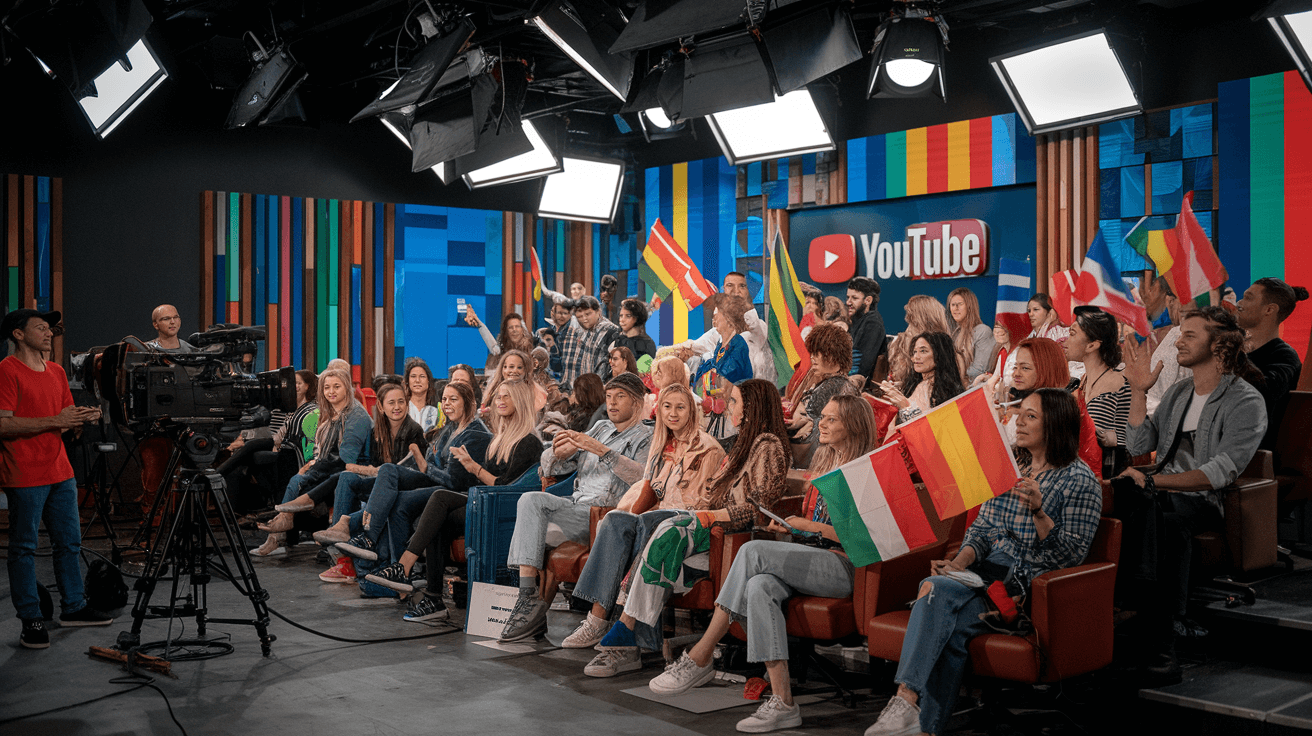In today’s globalized digital landscape, brands and content creators have unprecedented access to audiences from every corner of the world. However, reaching these diverse audiences isn’t simply about broadcasting content worldwide; it’s about resonating with them on a deeper level. This is where localization in digital advertising comes into play. Rather than relying on a generic, one-size-fits-all message, localization allows brands and creators to tailor their content and advertising to meet the cultural, linguistic, and contextual expectations of different audiences. Nowhere is this more relevant than in platforms like YouTube and podcasting, where creators are increasingly focused on delivering personalized, localized content that connects with specific regional markets.

A Word from the Industry
Busylike platform contributed valuable insights to this article, highlighting how businesses and entrepreneurs can use localized podcast guest appearances to boost their PR and marketing efforts globally. His expertise underscores the critical role localization plays in expanding the reach of podcasting as a tool for business growth. Busylike helps entrepreneurs book interviews and sponsorship deals with relevant podcasts and YouTube channels, offering them a platform to share their story with local audiences while tailoring the message for maximum resonance.
Key Lessons from Top YouTube and Podcast Creators
The digital advertising industry has evolved dramatically in recent years, with brands recognizing that content localization significantly boosts engagement and conversion rates. This is especially evident in YouTube and podcasting, two of the most dynamic content creation platforms. Successful creators on these platforms have learned to adapt their content not just for global distribution but for regional relevance. Whether it’s adjusting the tone, language, cultural references, or even visual style, localization strategies are helping content creators extend their reach and build more authentic connections with global audiences.
When discussing localization, it’s essential to understand that it involves much more than simple translation. It’s about shaping the content to reflect the specific preferences, values, and norms of different cultures. YouTube, as the world’s second-largest search engine, is a prime example of how localization can lead to success on a massive scale. Top YouTubers who operate internationally often produce content that caters to the sensibilities of distinct regions. For instance, Mexican beauty vlogger Yuya uses subtitles and translations to reach a broader audience while maintaining her connection with Spanish-speaking viewers. This allows her to engage viewers globally without losing the authenticity that made her popular in the first place.
Creators also utilize localized strategies to optimize how their content is perceived by different markets. The use of tailored thumbnails, localized video titles, and region-specific keywords helps boost visibility in local search results. A key insight here is understanding what visual or linguistic cues are most appealing to particular audiences. For example, what might work in terms of humor or design for an American audience could fall flat in Asia. Savvy YouTubers tweak these elements to ensure their content resonates across diverse markets, allowing them to transcend cultural boundaries.
Another effective localization tactic is collaborating with influencers or content creators from other regions. Such partnerships enable YouTubers to tap into new markets with the help of creators who already have a foothold there. By collaborating with a local influencer, creators introduce their content to new audiences in an authentic and relatable way. These partnerships are not merely about gaining exposure but about crafting content that naturally integrates local trends, humor, and cultural nuances. For example, many U.S.-based YouTubers collaborate with creators from Japan or India, effectively localizing their content to appeal to those specific regions.
Localization Strategies for Podcast Creators
While localization is highly visible in YouTube’s visual format, it is equally vital in the world of podcasting. Podcasts, with their intimate and conversational tone, offer creators a unique way to engage with audiences worldwide. However, to maximize engagement, podcasters must tailor their content to reflect the cultural, political, and social realities of different regions. Many successful podcasts, such as The Daily by The New York Times, regularly adapt their content to reflect global issues, incorporating international stories that appeal to listeners beyond the U.S.
Moreover, podcast creators often go a step further by creating localized versions of their shows. Some podcasts produce multiple language versions, while others offer translated transcripts to make the content more accessible to a wider audience. This approach works particularly well for educational and informational podcasts where the primary goal is to disseminate knowledge. TED Talks Daily is a prime example of a podcast that benefits from localization by offering translated versions in various languages, making complex ideas accessible to audiences who may not be fluent in English.
Localization in podcasting also extends to advertising. Podcast hosts and advertisers often use geo-targeted ad placements to deliver ads that are relevant to the listener’s location. Geo-targeted advertising allows brands to craft messages that cater to the specific needs and cultural preferences of local audiences. This is especially important for brands operating in multiple markets with varying levels of product availability, regulations, or consumer behaviors. By targeting ads geographically, podcasters ensure that listeners in, say, Germany, receive ads that are relevant to them, as opposed to listeners in Canada, who might have different interests or access to different products.
How Localization Impacts Digital Advertising Campaigns
The broader impact of localization on digital advertising is significant. Localized advertising content tends to see higher engagement rates because it feels more personalized and authentic to the audience. In a world where digital consumers are increasingly seeking relevance and personalization, localization allows brands to speak directly to their target audience in a way that feels genuine. This, in turn, fosters greater trust and brand loyalty. Audiences are far more likely to engage with content—and ultimately convert—when they feel that the brand understands their local context. Moreover, from an SEO perspective, localized content helps brands rank higher in local search results, improving organic traffic and brand visibility.
Beyond engagement and SEO benefits, one of the most critical lessons brands can learn from top YouTube and podcast creators is the importance of data-driven localization. Many creators closely monitor their analytics to understand which regions their audience is coming from and what types of content perform best in specific markets. Imagine a business is in Dubai want to enhance localization efforts, it will look to amplify its digital advertising strategies exploring the top media agencies in Dubai, based on verified client reviews. This data allows creators to adjust their strategies accordingly, producing content that feels more attuned to the expectations of different audiences. By leveraging data to identify trends and preferences, creators can refine their localization strategies, ensuring that their content continues to resonate across various cultural landscapes.
However, it’s important to note that successful localization is not about diluting a brand’s voice or message. Instead, it’s about making thoughtful adaptations that allow content to feel both local and global simultaneously. Creators who succeed in localization do so by respecting the cultural intricacies of their target markets while maintaining their unique brand identity. This balance is essential in creating content that resonates deeply without losing the creator’s original intent or voice.
In conclusion, localization is a vital strategy for any brand or content creator aiming to connect with a global audience in an authentic and meaningful way. As demonstrated by leading YouTube and podcast creators, localization goes beyond translation—it’s about understanding and adapting to the cultural, linguistic, and behavioral nuances of different markets. By tailoring content to fit the preferences of local audiences, creators and advertisers can drive higher engagement, build stronger connections, and ultimately achieve greater success in the ever-expanding digital world. Brands that invest in localization will not only stand out in a crowded marketplace but will also foster deeper connections with their audiences, leading to long-term loyalty and growth.

